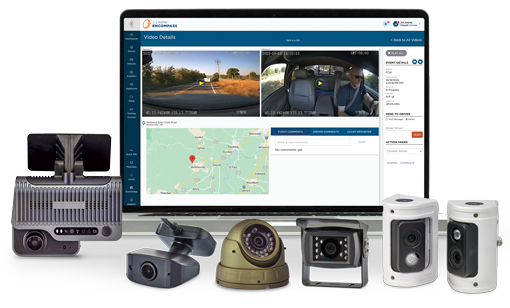Sr. Transportation Management Editor — J. J. Keller & Associates, Inc.
10 Steps for a Successful Dash Cam Launch
Learn the 10 key steps to implementing a dash cam solution successfully.
Published On: 07/19/2019


Written by:
Mark Schedler
Your justification for investing in a dash-cam system offers many potential benefits, including driver exoneration, protection of your company’s financial viability and brand, reduced crash rates, citations, and other unsafe behaviors and the ability to proactively identify and correct unsafe behaviors.
To maximize the return on your dash cam investment and to avoid common pitfalls, planning for the implementation of a system is critical. Success demands that every department of your company must be engaged, including executives, human resources, operations, and maintenance. Engagement is achieved by clearly communicating why your company made the decision to utilize video-event monitoring and the expectation that each person will support the change initiative.
Start with these 10 implementation steps in mind:
1. Clarify the purpose and goals to accomplish with the system.
2. Enlist feedback and participation from each department’s key personnel, from senior management to dispatchers and drivers.
3. Identify an initial group of drivers, at least one safety department representative, and a dispatcher to test the system(s).
4. Identify specific behaviors to monitor and the trigger parameters for each behavior.
- Use a baseline period of 2-3 weeks with no coaching to establish levels of risky-event frequency against which improvement can be measured.
5. Rank the behaviors from the riskiest to the least risky for your operation.
6. Develop policies and procedures as guides for proper use of the system, outline coaching expectations, use of training after incidents, and discipline.
7. Outline an implementation communication and training plan that includes coaches, dispatch, and drivers.
8. Audit against policies and procedures to ensure the purpose and goals of the system are widely understood and supported.
9. Verify that all who need to be trained have been trained before they are involved in the use of the system.
10. Set goals and monitor for:
- Consistent coaching assessments
- Actual versus expected risk and operational cost results
- Timely action to correct system issues and performance gaps
For more tips on how to get your dash cam system up and running, including how to effectively coach, what behaviors to focus on and policies and procedures, download the "Getting Dash Cams Up and Running" whitepaper.
You may also enjoy the following articles:
Sign up for our newsletter!
We'll help you stay on top of regulations, best practices, and fleet industry news. Sign up to receive a monthly email notification with links to our most recent blog articles, free resources, and event invites.
